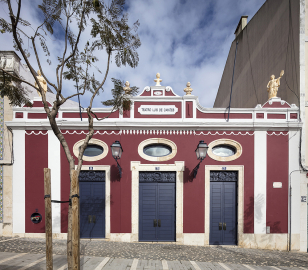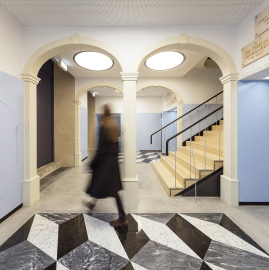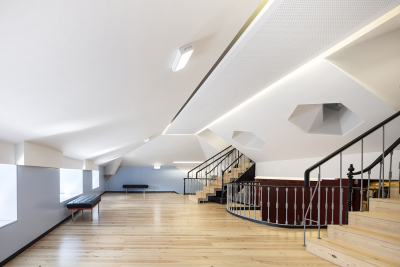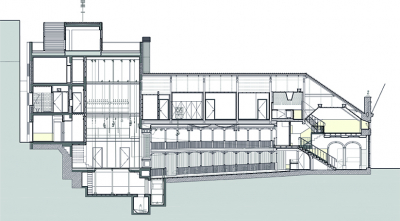Luís de Camões Theatre
The Teatro Luís de Camões, opened in 1880, is a modest "Italian theatre" set in a plot, about 13 X 36 meters, totally surrounded by buildings.
In 2012 the Municipality of Lisbon, given the state of degradation of the object, launched an architectural competition aimed at its recovery, without losing, however, the atmosphere of the 19th century in presence.
The shell of the theatre is made of stone and brick masonry and its interior was divided and structured in wood. The roof was supported by thick transversal crossbars.
Our proposal sought to re-qualify, as well as clarify, the existing structure in its multiple aspects, symbolic, cultural, historical and formal, minimizing the discomfort and insecurity both for the public and the actors and the technicians who will work in the Theatre.
The main volumetry and its levels partitions were respected and only the overly sloping various stairs were rectified; plasterboard and wood continue to be the shaping materials of the interior space.
We have tried to give back to Lisbon an object whose ambience, although remaining naively nostalgic of an already distant time, is better prepared for a new life consistent with our contemporary demands. We discover the original painting of the ceiling, hidden above other rotten canvases and soaked in water. We forced its recovery, restoration and repainting and today the room appears to us more spacious, luminous and coherent with the first desires that will have built it. Two emergency corridors were created from both sides, linking more directly the whole area of the stage and dressing rooms of the artists to the only exit to the outside, on the façade of the Theatre. These corridors section the galleries on the ground floor which, with its dark red acoustic surface contrast and dramatize even more the wooden fragile arcade that supports the upper floor.
As already mentioned, most of the recovery of this nineteenth-century building followed very closely the materials used at that time. Only by absolute impossibility, given the state of the floor of the Foyer (half a level above the side galleries that surround the Theatre Room), it was reinforced with metal beams. In all other situations the pieces of wood were subjected to tests, in order to assess the viability of their permanence in the restored whole, being replaced by identical pieces, also in wood, when they did not respond. The roof was a major concern, either by the humidity it allowed, along the walls or by the lack of control of the ambient temperature; also here, the traditional materials have been combined with current ones, in order to optimize the comfort and reduce maintenance costs with air conditioning.









